|
|
|
CONTACT US
Click Here! |
| This site is best viewed with a screen resolution of 800 X 600 at high colour settings |
|
Flask List
Acacallis-Ancistrochilus Angraecum-Aspasia Barkeria-Broughtonia Bulbophyllum Capanemia-Catasetum Cattleya Cattleyopsis-Cycnoch, Cymbidium-Cyrtorchis Dendrobium-Dossinia Encyclia-Eulophiella Galeandra-Jumellea Laelia-Lycaste Macodes-Nephalaphyll, Odontogloss,-Oncidium Paphiopedilum-Psychilis Rangaeris-Stenocoryne Tainia-Zygopetalum |
|
Plant List
Acampe-Bulbophyllum Cattleya-Dossinia Encyclia-Promeaea Renanthera-Vanda |

Jewel orchids from seedRange of genera Jewel OrchidsSeveral genera are cultivated at Burleigh Park, Haemaria ,Anoectochilus, Dossinia, Goodyera, and Macodes. Culture requirements are simple, a very well shaded sheltered position, small pots well crocked, and shredded spaghnam moss and isolite. The plants are grown with the rhizome more or less on the surface of the media, never buried.
Cultivated species
Germination and deflaskingSeed germinates readily, and after transfer to a stronger replate media, the plantlets proceed to emulate the adult form in that they spread out to form clumps.The final reflask entails the planting of individual plantlets in the bottle to develop to a size where they can be deflasked. Deflasking is also relatively simple. Seedlings are washed from the bottle (or the bottle broken), and all agar is washed from the plants.
CultureThe seedlings are placed together on the surface of a thin bed of shredded spaghnam and isolite in a small community pot. We use 10cm pots, two thirds filled with crock. After compotting the seedlings, the pot is drenched with water and placed in a sheltered, very shady position, with light misting occasionally for a few days. DO NOT TREAT SEEDLINGS AT THIS STAGE WITH FUNGICIDES, which are growth inhibitors. Upcoming speciesOther species awaiting seed pods are Anoectochilus youngianus and Anoectochilus roxburghii. These also appear to grow well in the fine bark or shredded spaghnam. We would be interested to hear from other growers who have other species and genera and an interest in conservation by propagation. Email us now! |
Text by Ian Walters.
May be reproduced provided source acknowledged.
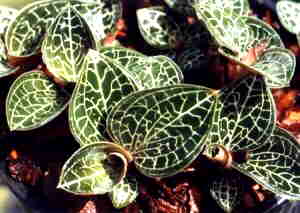
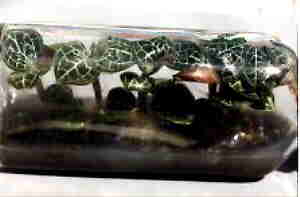
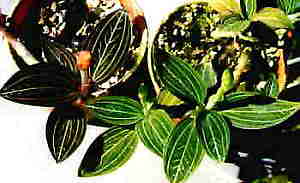
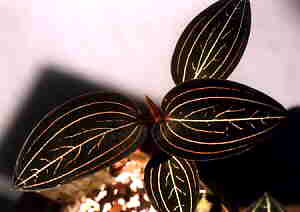 A slightly smaller grower than the normal
form, and with definite silver veins on the dark green leaf
background.
A slightly smaller grower than the normal
form, and with definite silver veins on the dark green leaf
background.
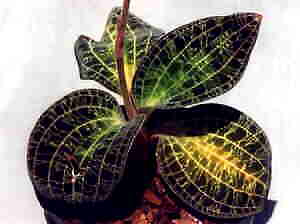
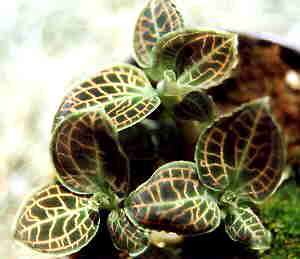 Another large leaf of green with gold veining.
Another large leaf of green with gold veining.
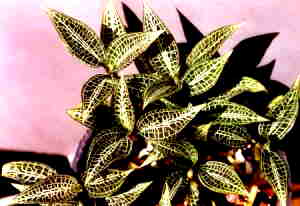 A vivid green leaf veined silver.
A vivid green leaf veined silver.